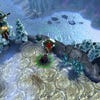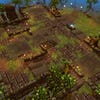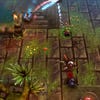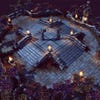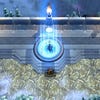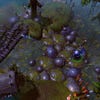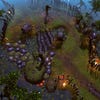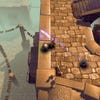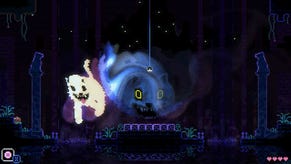Bloodline Champions
Dotty over DOTA.
I'm so stupid. With my review account for Bloodline Champions, Funcom included some in-game cash so I could see what spending money in the game was like. With all the restraint of a Casablancan libertine, I wisely invested it in sex-change outfits, a character portrait and some weapons with faces on. Now they've released a frog suit for the Ranid Assassin. It's Kermit with knives and it's 3000 Funcom coins, 30,000 in-game coins, 18 Euros or one kidney to you and me.
I really want that frog. I lust for it. I finally understand what it must be like to be Miss Piggy.
Bloodline Champions, as you'll know from Quintin's preview, is a free-to-play team arena title. It eschews, with great justice, the title of MMO, but throws up the same large variety of classes; there are currently 20, following the four standard team archetypes of tank, melee, healer and ranged, each with a huge range of twists and individual powers.
The Bloodlines, as they're called, range from the cannibalistic Glutton, a mound of tribal flesh specialising in melee and healing, to the Psychopomp, a healer specialising in buffs, debuffs and crowd control. There is a backstory, but it's less relevant than a revenant elephant.
What's unusual about Bloodline Champions is that its origins are in the hugely popular Warcraft III map and mod Defense of the Ancients, which provided the inspiration for this, League of Legends, Heroes of Newerth and Demigod. Essentially, these are stripped-down real-time strategy games – like the tower defence genre that also emerged from DOTA – with players selecting from a range of heroes and then controlling them in the more hands-off fashion of an RTS: an action-oriented game from a strategic viewpoint.
What differentiates Bloodline Champions from Demigod? It doesn't have the towers or automated NPC spawns which made that game slow and somewhat turgid, and the focus here is on fast team-based multiplayer rather lumbering advances. What differentiates it from League of Legends? This game is completely egalitarian; all veterans get is in-game currency and unlocked titles and icons, none of which affect gameplay. And from Heroes of Newerth? There isn't any in-game levelling – your hero starts and ends every game exactly the same (normally, in my case, dead).
On that basis, Bloodline Champions is closer to Counter-Strike or Team Fortress Classic. It's all about choosing your weapon, learning your abilities and working with your team-mates. Solitary players are unlikely to succeed; being even slightly outnumbered makes your chances of victory drop down to Monster Raving Loony levels. Watching high-end battles through the universal Observer mode is an excellent way of learning the game, and you'll see players feinting and dodging, attempting to divide their opponents and pin them, much like professional StarCraft and Warcraft battles.
Playing Bloodline Champions the first time is slightly awkward. The control system is somewhat alien, combining WASD movement with a variety of shortcut keys that prove difficult to access whilst moving. Though many ranged abilities pin you while you're casting, the game is so fluid that there's not an obvious moment to move your left hand away from WASD to stretch all the way to "1".
Meanwhile, your right hand controls direction of facing, important for when you release your spells. Left-mouse is your primary attack, right a secondary skill, the buttons Q,E and R depend on the class, 1 and 2 are "Ex"s – high-powered versions of certain skills – and the space bar is normally a travel power. F is a superpower, built up by contributing to combat through healing, defending or attacking.


